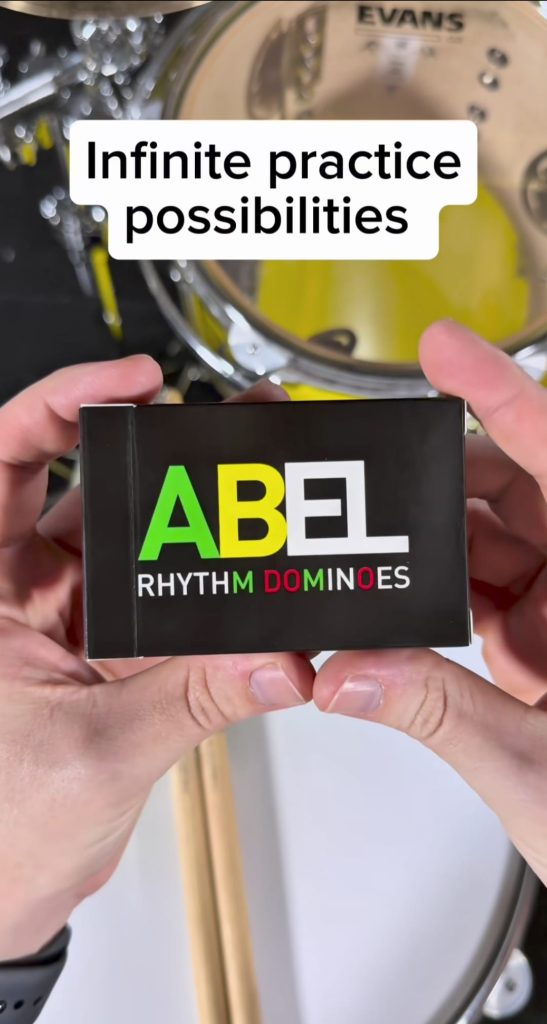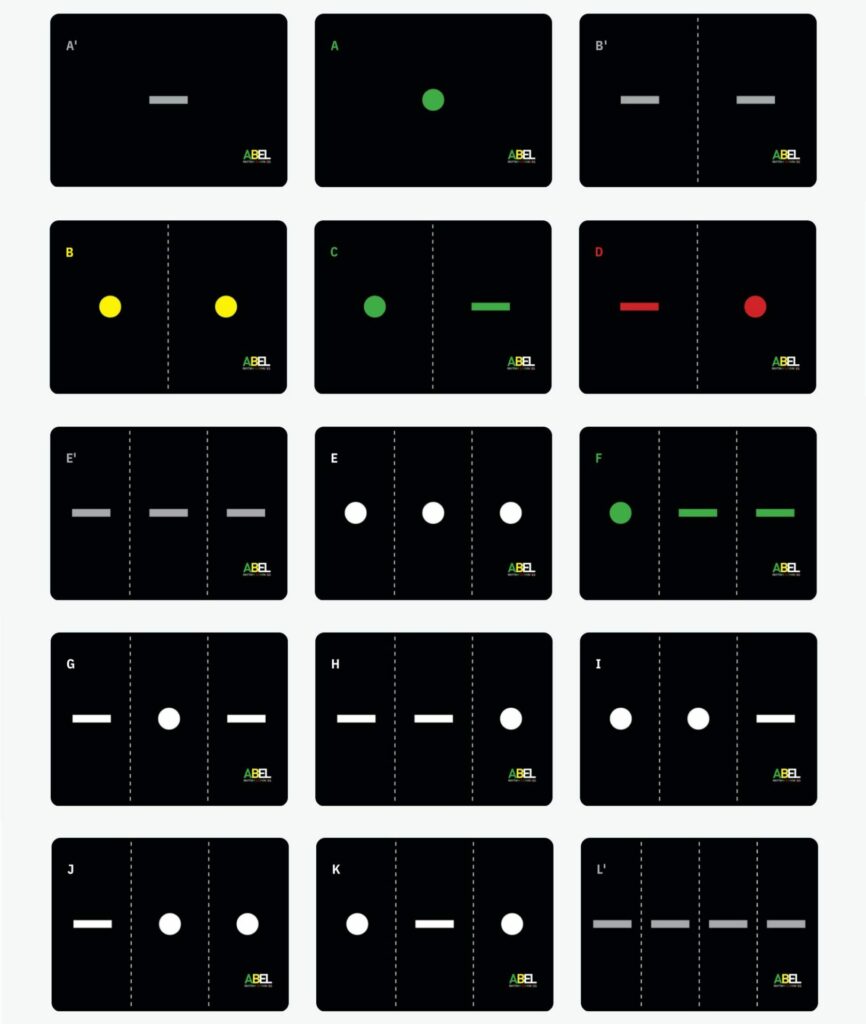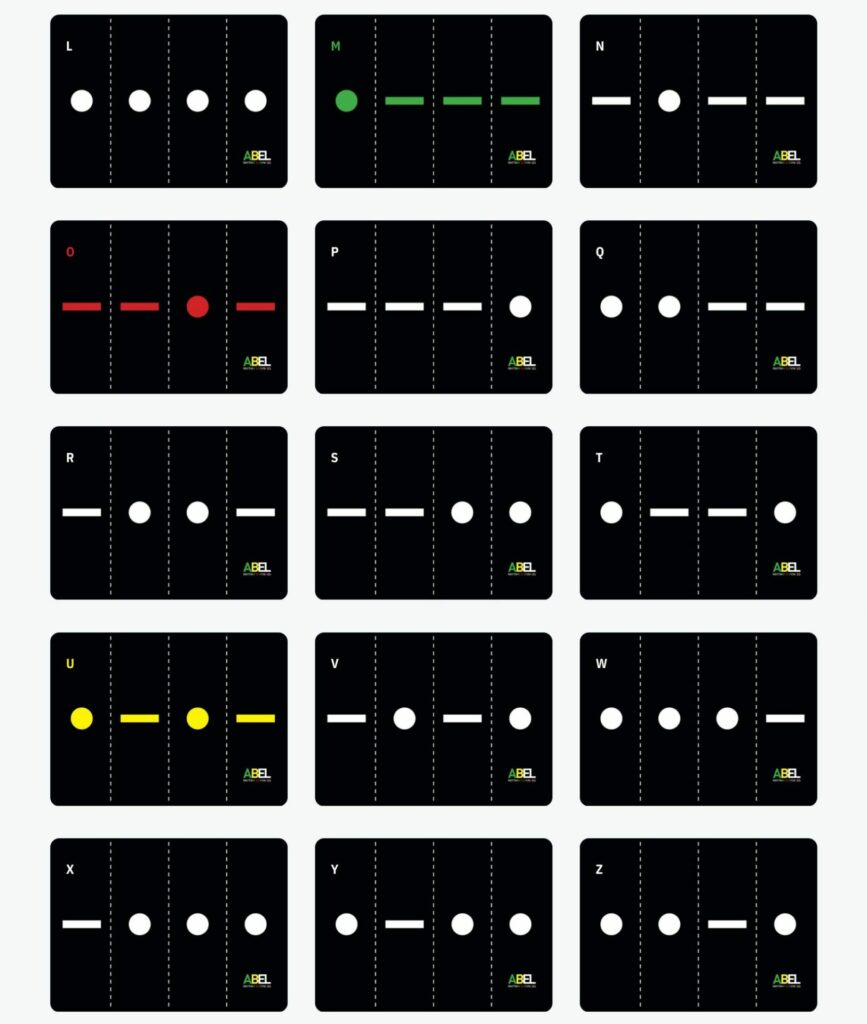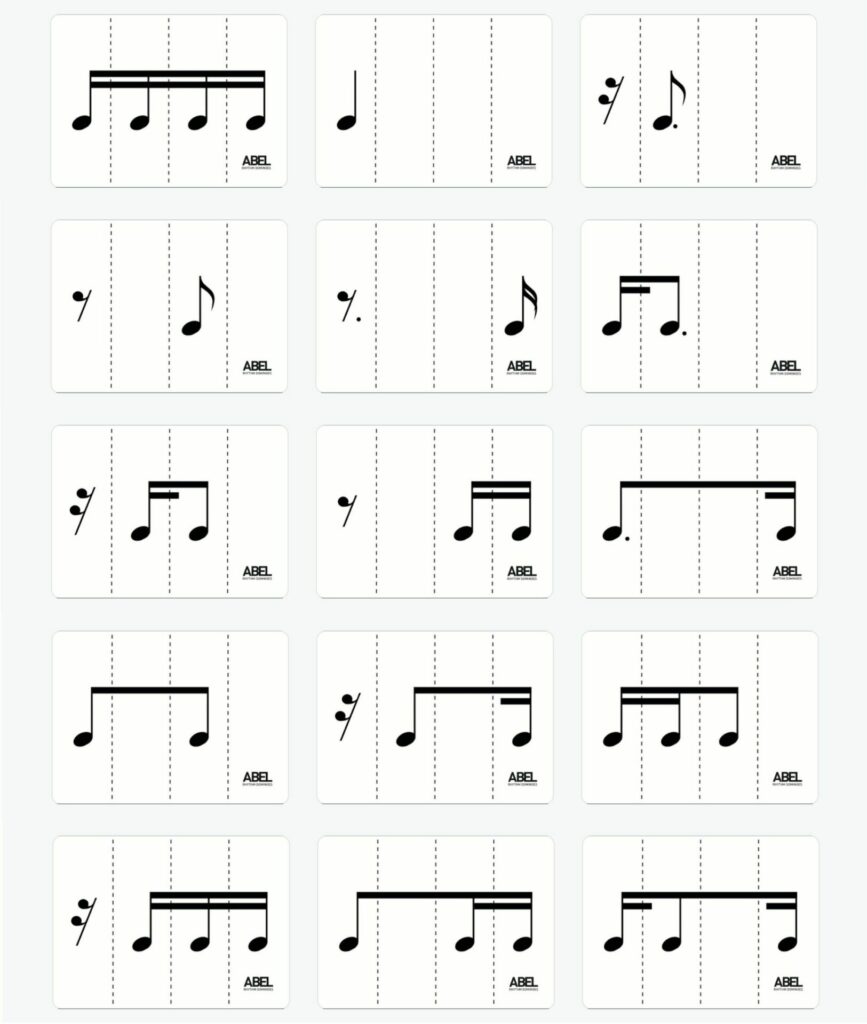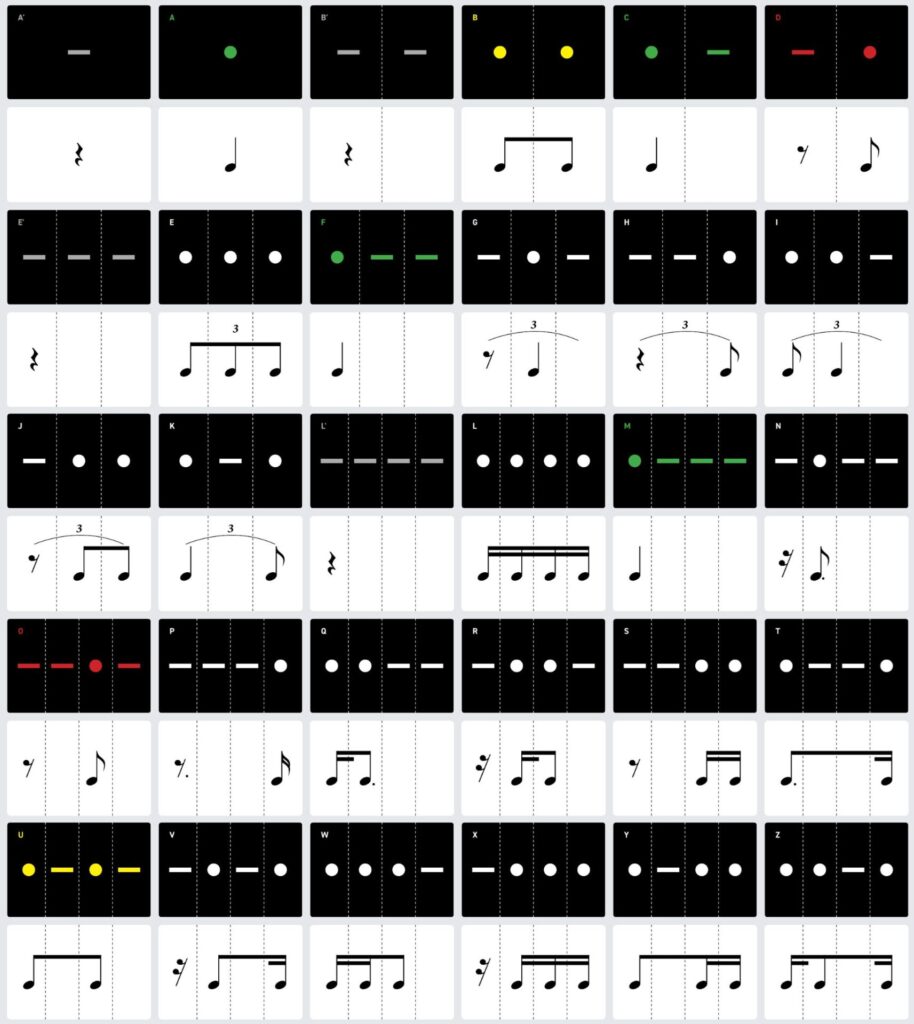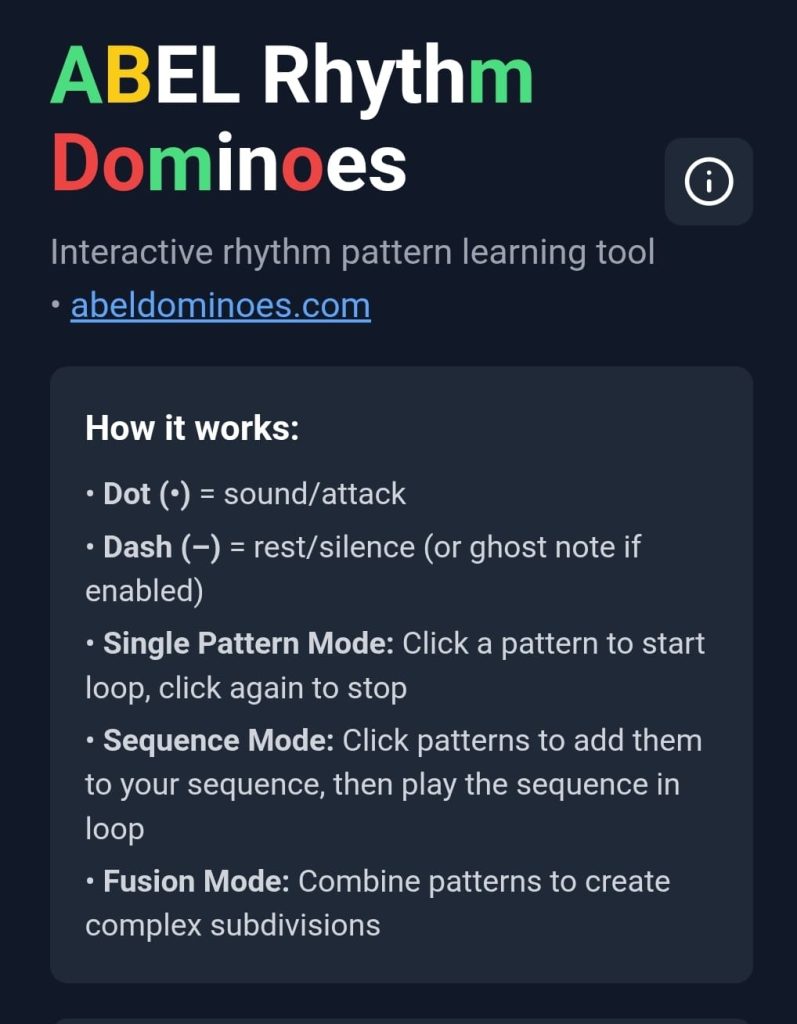Rhythm is perhaps the single most fundamental element of music. Rhythm in music refers to the pattern of silences and sounds that occur over time.
“Rhythm is to time what symmetry is to space.”
⬛️ The BLACK DECK™ represents the pulse and its (sub)divisions in the easiest way possible.
The pulse is a steady beat that runs through the music. The pulse (sub)divisions are smaller parts of a beat.
1 CARD = 1 BEAT
Each card is associated with a letter. The number of symbols (dashes and/or dots) on each card tells you what the (sub)division of the pulse is:
1️⃣ A’ or A
2️⃣ B’ or B C D
3️⃣ E’ or E F G H I J K
4️⃣ L’ or L M N O P Q R S T U V W X Y Z
The dots indicate when/where to play the notes.
The dashes represent rests or sustained notes.
It is important to first work on the cards with only dashes (A’B’E’L’) counting them out loud in order correctly and using a metronome to be comfortable when you have to play the cards with dots (A to Z).
🟢🟡🔴 The color codes allow you to easily identify similar rhythmic patterns in different (sub)divisions.
⬜️ The WHITE DECK™ represents rhythmic figures used in classic musical notation.
You will find these rhythmic figures in all musical scores. The notes are overlaid on a grid so you can see the note value at a glance and get a feel for how each one lines up with the imaginary grid behind it.
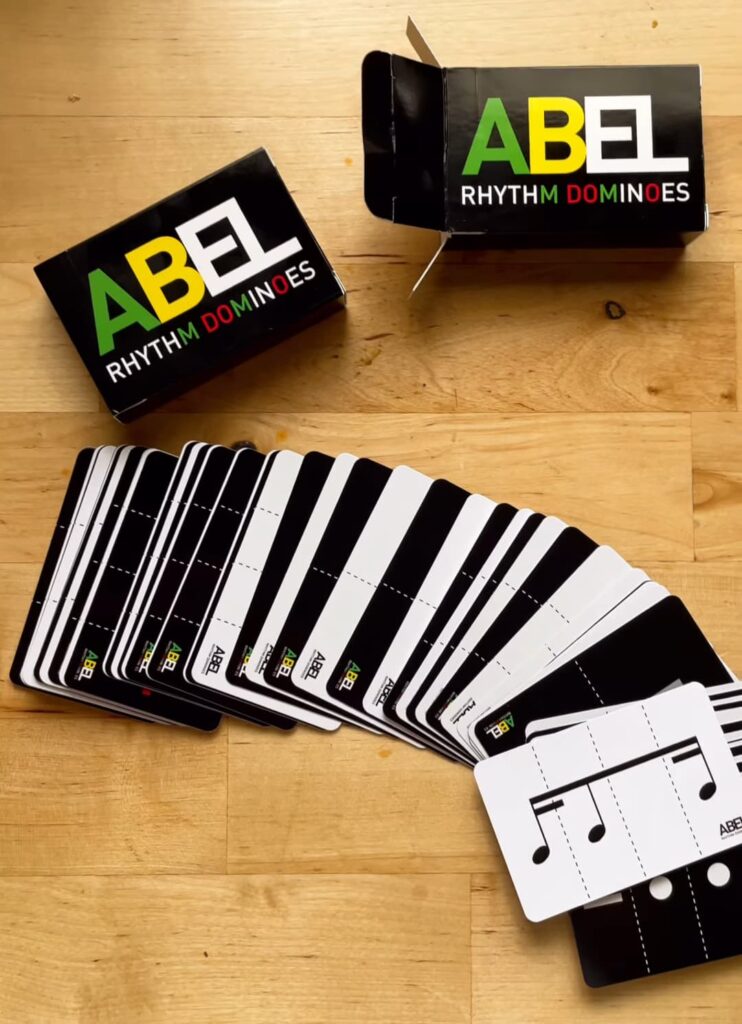
How to play?
ABEL Rhythm Dominoes ® – Playing Cards™ can be played alone but it’s even more fun together !
However you will always need one friend to play: the METRONOME.

Choose one or more cards to play (black cards/white cards or both) and set a tempo on your metronome, then play the correct rhythm corresponding to the right card on the right time.
When you’re playing with friends, set several rows of cards to play simultaneously. You can also ask your friend to swap cards during the game. To play rhythm, you can use your hands, body clapping, claves, drums, any percussion instrument or other music instrument like guitar or piano for example.
To know how to play the WHITE DECK™, use the BLACK DECK™ to easily know when/where to place the rests and notes.
Dashes can be replaced with ghost notes 👻
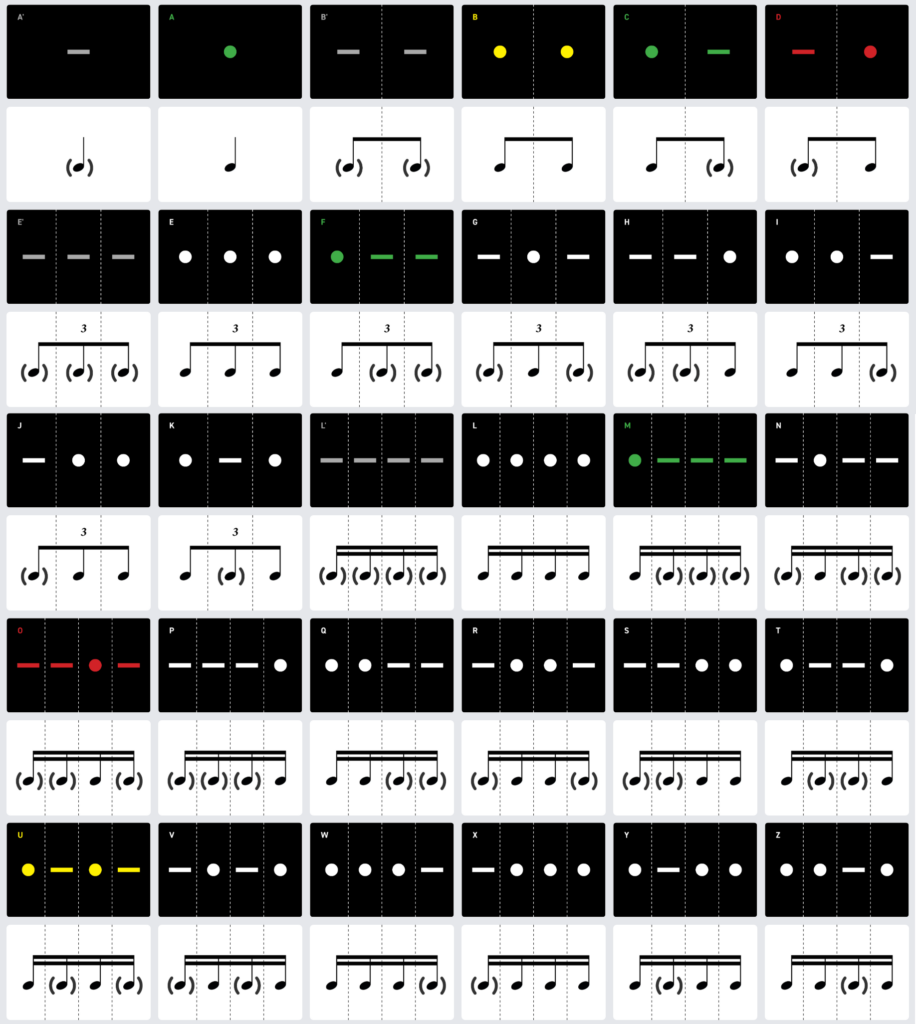
A ghost note (or a dead, muted, silenced or false note) is a musical note with a rhythmic value, but no discernible pitch when played. In musical notation this is represented by an “X” for a note head instead of an oval, or parentheses around the note head.
Examples of rules:
- Call-and-response: One player performs one or more cards, the other one echoes him back.
- Improvisation: Choose cards at randomly, combining them however you choose. An instructor can facilitate students to improvise as a whole class, in pairs, or in other configurations.
- Rhythmic Dictation: An instructor can perform some of the rhythms, then have the students identify which cells were performed and in what order (e.g., cards P, O, U, and L). This is a way to encourage students to listen for the big picture and develop rhythmic dictation skills without worrying about the notation component of it. After students get comfortable with the activity, they can perform short dictations for their classmates.
- Performance Loops: The instructor (or a student) can point to or call out rhythms for the rest of the class to perform in a loop.
Follow ABEL on social media to find many examples of applications and rules :
https://linktr.ee/abeldominoes
We wish you maximum amusement while playing and learning with ABEL and please never forget:
“We’re not playing to win, we’re playing to play. And ultimately, playing is fun. Perfectionism gets in the way of fun. A more skillful goal might be to find comfort in the process. To make and put out successive works with ease.“
Use our new FREE app to learn how to play the different letters of the ABEL alphabet:
ABEL Rhythm Dominoes – Interactive Music Pattern Learning Tool | Claude
Benefits of ABEL© ✅
- Improves rhythm and timing: ABEL Rhythm Dominoes® is a great way to improve your rhythm and timing. The game requires players to listen carefully to the beat and match their cards accordingly. This can help to improve your overall coordination and musicality.
- Develops cognitive skills: ABEL Rhythm Dominoes® is a challenging game that requires players to use their problem-solving skills, memory, and attention. The game can help to improve your cognitive abilities and keep your mind sharp.
- Encourages creativity: ABEL Rhythm Dominoes® is a versatile game that can be played in many different ways. Players are encouraged to be creative and come up with their own strategies. This can help to boost your creativity and problem-solving skills.
- Fun and social activity: ABEL Rhythm Dominoes® is a great way to have fun with friends and family. The game is easy to learn but challenging to master, making it perfect for players of all ages and skill levels.
- Promotes active listening: ABEL Rhythm Dominoes® requires players to listen carefully to the beat and match their cards accordingly. This can help to improve your listening skills and focus.
- Can be played anywhere: ABEL Rhythm Dominoes® is a portable card game that can be played anywhere. This makes it a great option for travel or parties.
Blank cards and a FREE erasable marker are included in each ABEL Rhythm Dominoes®- Playing Cards™ set so you can write the rhythm figures yourself.
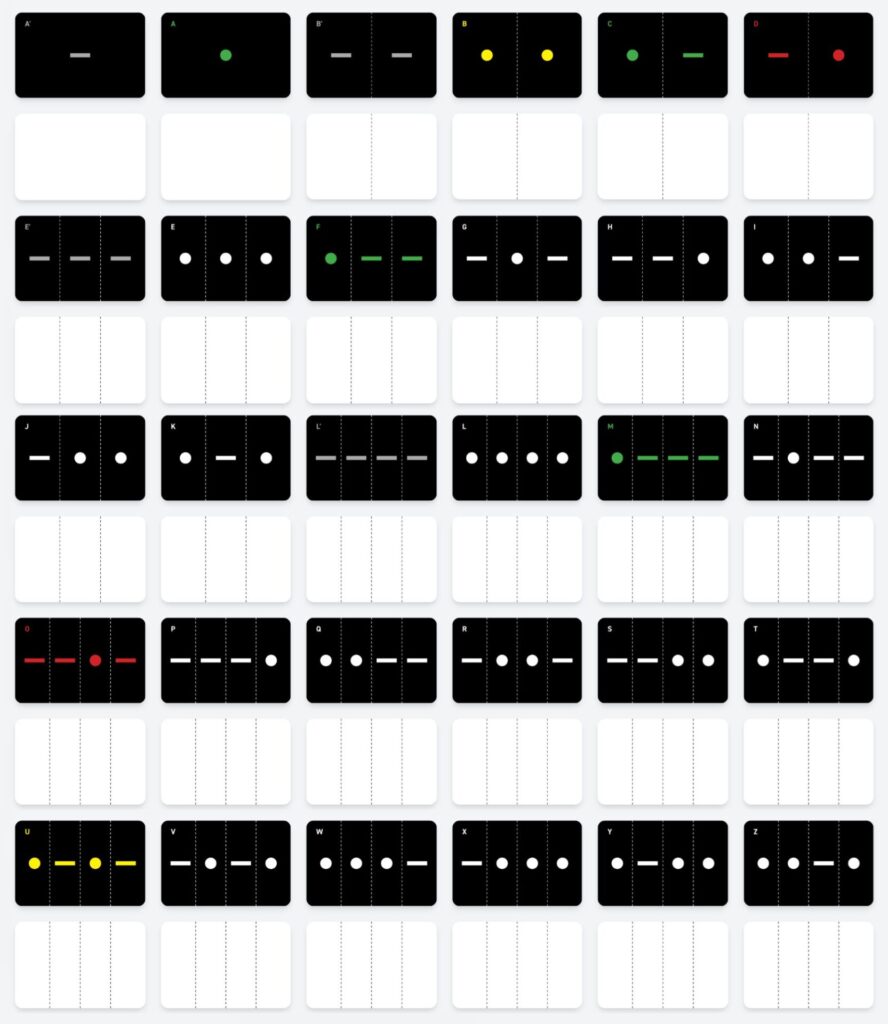
Different concepts can be assimilated to the Rhythmic Alphabet™ in order to work on specific things on your instrument such as accents or drum rudiments like flams, doubles or even sticking.
ACCENTS
In music, an accent is an emphasis, stress, or stronger attack placed on a particular note or set of notes, or chord, either because of its context or specifically indicated by an accent mark. Accents contribute to the articulation and prosody of a performance of a musical phrase. Accents may be written into a score or part by a composer, or added by the performer as part of their interpretation of a musical piece.

FLAMS
The flam is one of the most popular drum rudiments and you can find it in many other rudiments as well. Consisting of a grace note (lighter stroke) that leads into a full stroke, flams are popular in every style of drumming, from rock and jazz music to marching pieces. To write flam stroke drum notation, represent it with a small grace note played immediately before a larger, primary note, often connected by a tie.
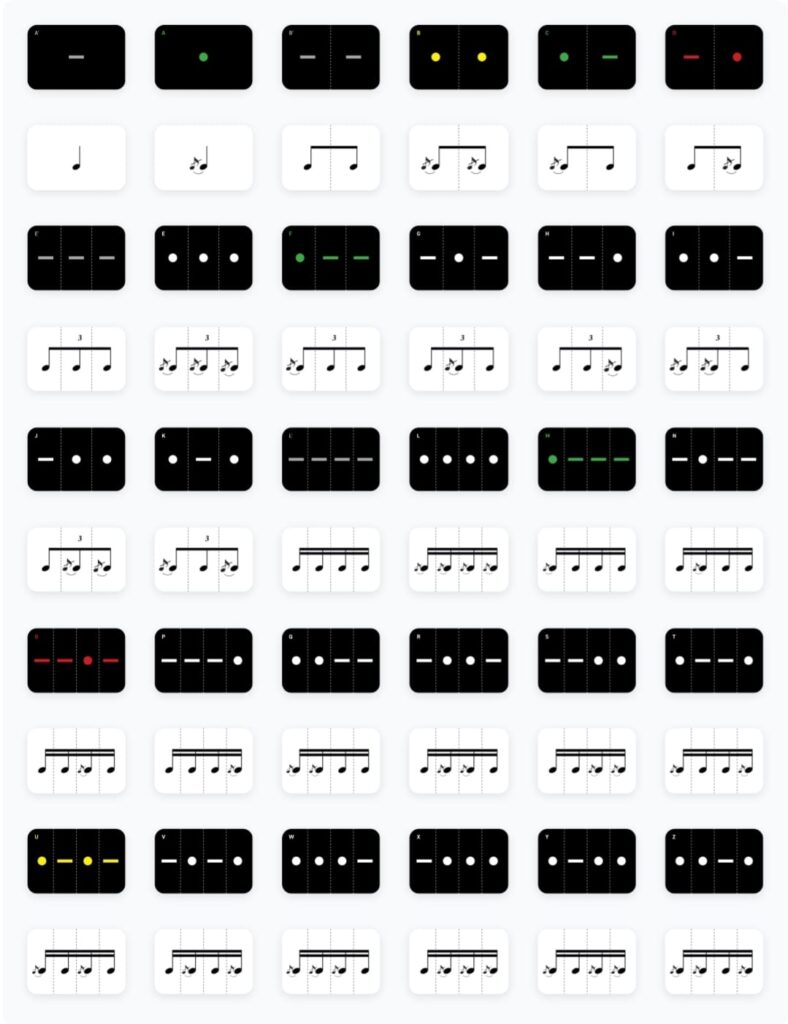
DOUBLES

Doubles are extremely useful, and not just in a roll context. Isolated double strokes can be played around the drumset to produce musical effects or to give you a little extra time to prepare for your next drum or cymbal hit. In addition to those obvious applications, being able to play a good-quality double-stroke roll will likely improve your drumming in ways you wouldn’t expect.
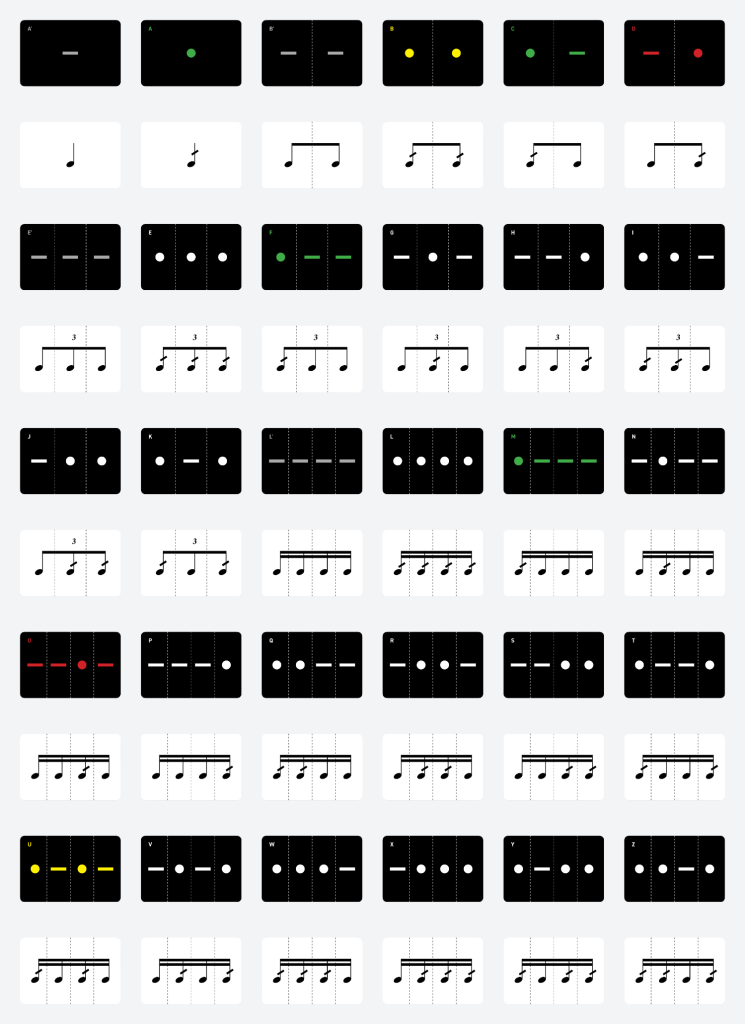
STICKING
Sticking simply refers rather generically to which hand plays which note. While some sticking concepts are straightforward, others are more calculated and take a little more time to develop. We use sticking concepts in drum fills, grooves, rudiments, and snare drum exercises.
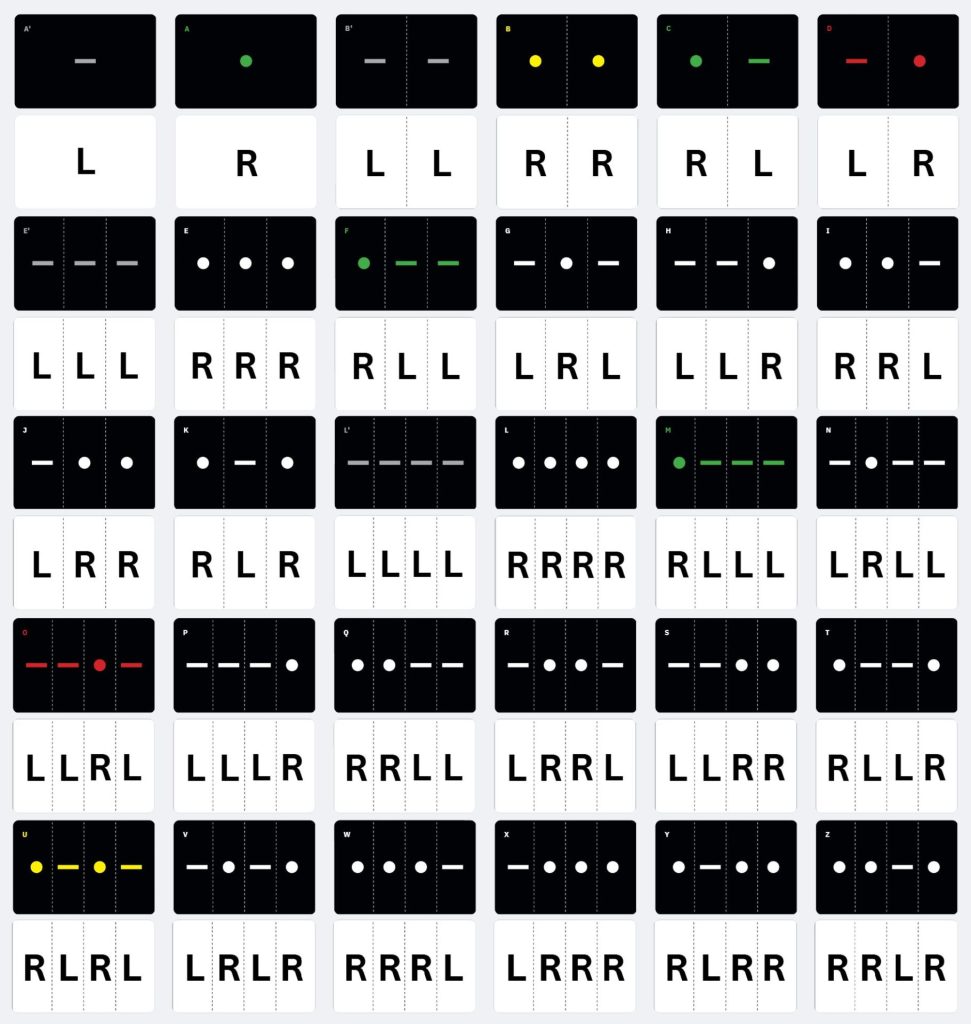
ABEL Rhythm Dominoes ®️ is officially protected by
United States Patent and Trademark Office – USPTO
European Union Intellectual Property Office – EUIPO


